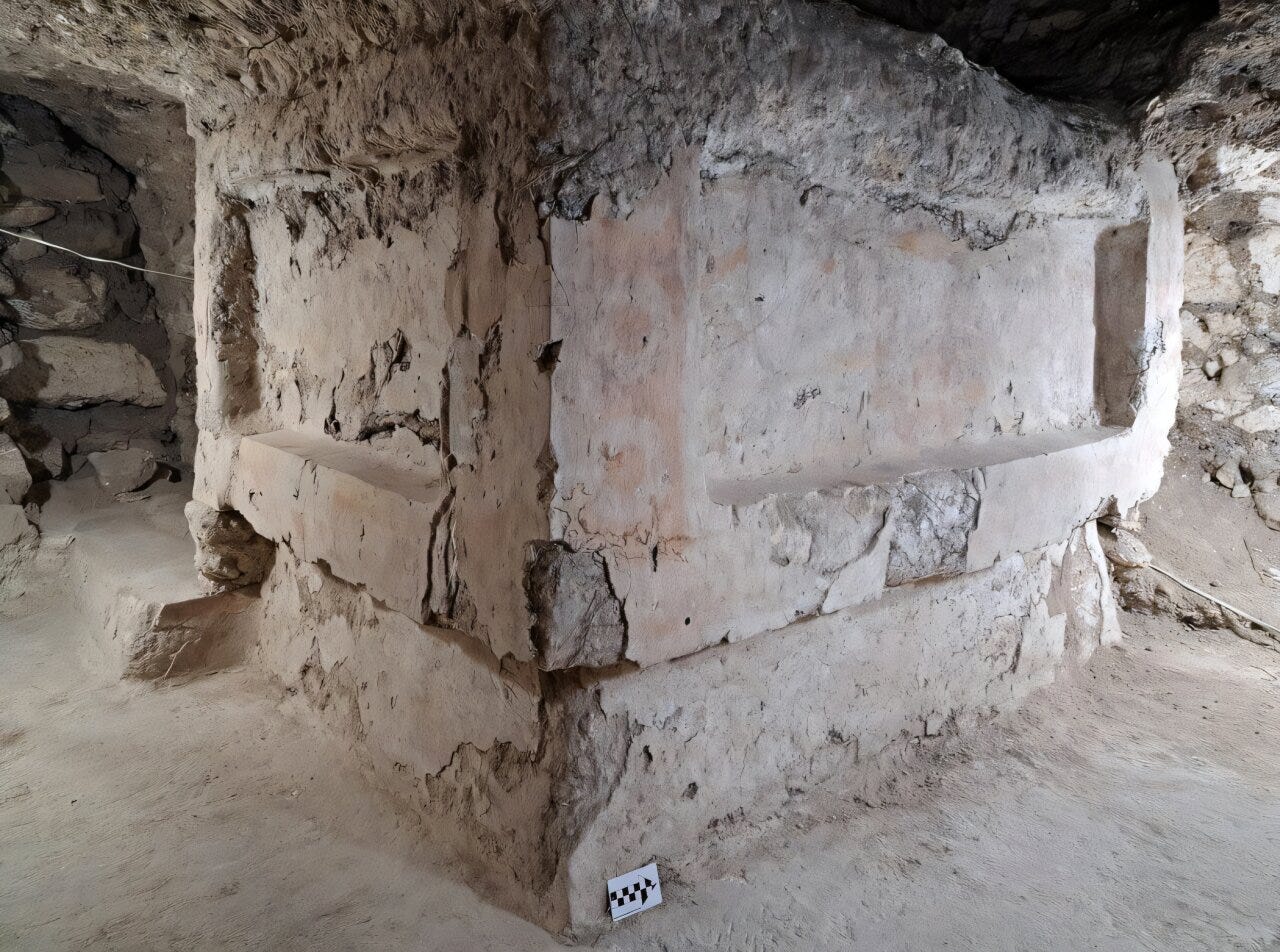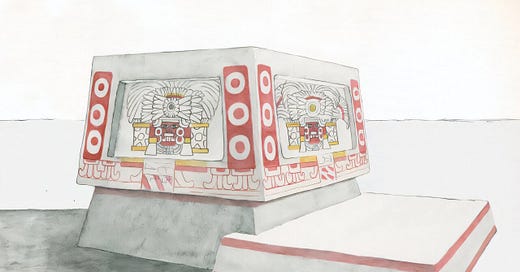Deep within the dense Guatemalan jungle, archaeologists have uncovered1 a significant artifact that offers fresh insights into the intricate relationship between two ancient Mesoamerican powerhouses: the Maya city of Tikal and the central Mexican metropolis of Teotihuacan. This discovery—a painted altar buried near Tikal's epicenter—suggests a profound cultural and political interplay between these civilizations.

The Discovery: An Altar with Central Mexican Signatures
The altar, dating back to the late 4th century A.D., is adorned with vivid panels in red, black, and yellow. It portrays a figure donning a feathered headdress, accompanied by shields or ceremonial regalia. Notably, the depiction bears striking similarities to representations of the "Storm God" prevalent in Teotihuacan iconography. This resemblance indicates that the artisan responsible for the altar was likely influenced by, or directly affiliated with, Teotihuacan's artistic traditions.
Stephen Houston, a professor at Brown University and co-author of the study, remarked,
"What the altar confirms is that wealthy leaders from Teotihuacan came to Tikal and created replicas of ritual facilities that would have existed in their home city. It shows Teotihuacan left a heavy imprint there."
Tracing the Threads of Teotihuacan Influence
Prior to this discovery, evidence of interactions between Tikal and Teotihuacan was primarily rooted in trade artifacts and shared architectural elements. Founded around 850 B.C., Tikal evolved from a modest settlement into a formidable dynasty by 100 A.D. By the 4th century A.D., the dynamics between the two cities had intensified, culminating in significant political shifts.
Historical records indicate that in A.D. 378, Teotihuacan forces intervened in Tikal's leadership, deposing the reigning king and installing a ruler aligned with their interests. This strategic move underscores Teotihuacan's expansive ambitions and its intent to exert influence over the Maya region.
Architectural Echoes: Teotihuacan's Footprint in Tikal
Further emphasizing Teotihuacan's presence is the discovery of a scaled-down replica of Teotihuacan's "Citadel" within Tikal. Initially mistaken for natural hills, this complex mirrors the architectural style and orientation of its Mexican counterpart. Such deliberate replication suggests more than mere admiration; it points to a tangible Teotihuacan enclave operating within Tikal.

Andrew Scherer, another co-author and professor at Brown University, observed,
"The architectural complex we found very much appears to have been built for people from Teotihuacan or those under their control. Perhaps it was something like an embassy complex, but when we combine previous research with our latest findings, it suggests something more heavy-handed, like occupation or surveillance."Sci.News: Breaking Science News
Ritual Practices: A Fusion of Traditions
The altar's internal contents further attest to the blending of cultural practices. Within, archaeologists discovered the remains of a child interred in a seated position—a burial custom characteristic of Teotihuacan but atypical for the Maya. Additionally, an adult burial accompanied by a green obsidian dart point, a material and design distinctive to Teotihuacan, was unearthed. These findings highlight the deep-seated integration of Teotihuacan rituals within Tikal's ceremonial life.
Reflections on a Complex Relationship
The subsequent deliberate burial of the altar and its surrounding structures, left untouched for centuries, suggests a nuanced sentiment towards Teotihuacan's legacy in Tikal. While Teotihuacan's intervention may have catalyzed Tikal's ascent to greater prominence, it also left an indelible mark on the city's cultural and political fabric.
Houston reflected on this duality, noting,
"There's a kind of nostalgia about that time, when Teotihuacan was at the height of its power and taking increasing interest in the Maya. It's something exalted for them; they looked back on it almost wistfully."
Broader Implications: Understanding Ancient Imperial Dynamics
This discovery offers a compelling glimpse into the mechanisms of ancient imperialism and cultural exchange. Teotihuacan's strategic establishment of enclaves within distant cities like Tikal exemplifies a sophisticated approach to expansion, blending direct intervention with cultural integration. Such insights enrich our understanding of Mesoamerican history, revealing the complex tapestry of alliances, conquests, and cultural syntheses that shaped the ancient world.
Additional Related Research
For those interested in delving deeper into the interactions between Teotihuacan and Maya civilizations, the following studies provide valuable insights:
Houston, S., Garrison, T. G., & Román-Ramírez, E. (2021). A Teotihuacan complex at the Classic Maya city of Tikal, Guatemala. Antiquity, 95(380), 645–663. https://doi.org/10.15184/aqy.2021.140
Martin, S., & Grube, N. (2000). Chronicle of the Maya Kings and Queens: Deciphering the Dynasties of the Ancient Maya. Thames & Hudson.
Borowicz, J. (2003). Images of Power and the Power of Images: Early Classic Iconographic Programs of the Carved Monuments of Tikal. The Maya and Teotihuacan: Reinterpreting Early Classic Interaction, 217–234.
These works collectively shed light on the multifaceted relationships and cultural exchanges that defined Mesoamerican civilizations.
Román Ramírez, E., Paiz Aragón, L., Bass, A., Garrison, T. G., Houston, S., Hurst, H., Stuart, D., Corado Ochoa, A., García Leal, C., Scherer, A., & Piedrasanta Castellanos, R. E. (2025). A Teotihuacan altar at Tikal, Guatemala: central Mexican ritual and elite interaction in the Maya Lowlands. Antiquity, 99(404), 462–480. https://doi.org/10.15184/aqy.2025.3










Share this post